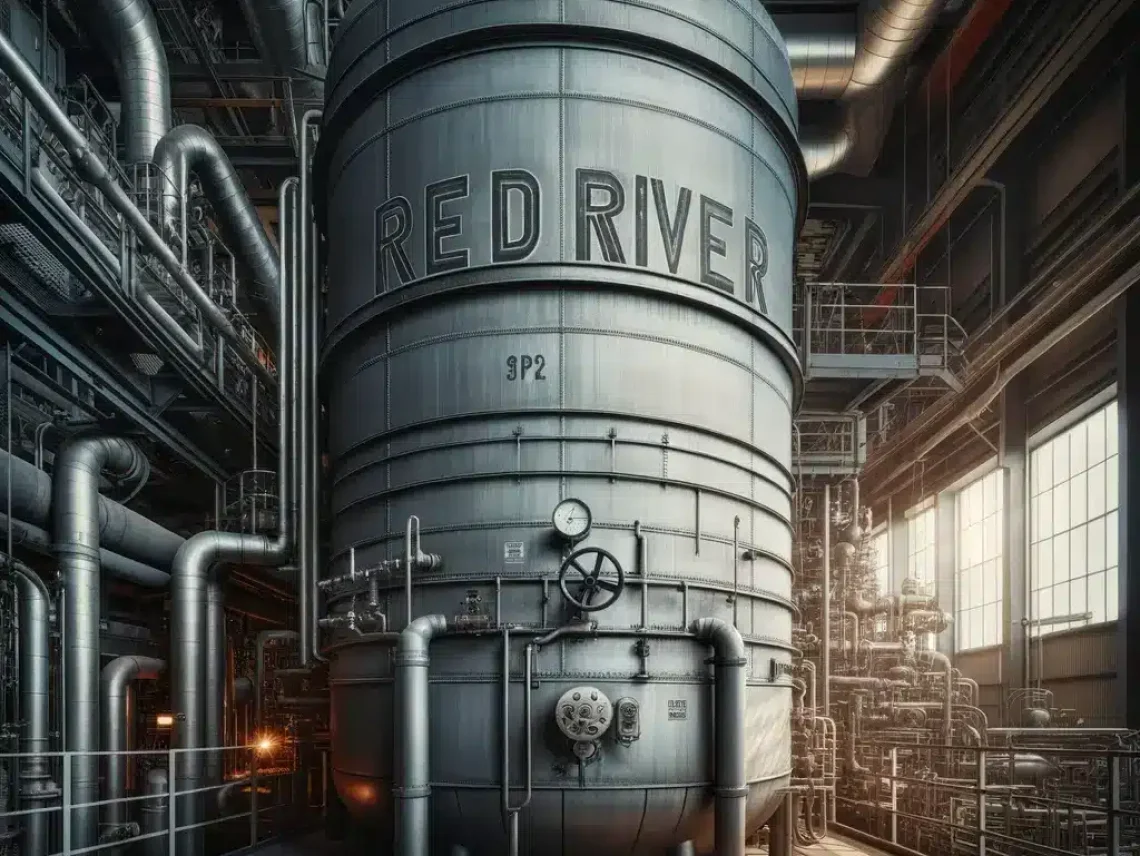
A blowdown tank is an essential component in boiler systems, playing a crucial role in safety, compliance, and efficiency. If you manage steam boilers or industrial pressure systems, understanding blowdown tanks can mean the difference between compliance and costly downtime. But what exactly is a blowdown tank, how do you size one, and why does it matter? In this comprehensive guide, we’ll walk you through the critical facts about blowdown tanks, from code requirements to real-world benefits.
A blowdown tank is a type of pressure vessel designed to safely collect and cool down hot water and sediment discharged during boiler blowdown. This process is vital for removing dissolved and suspended solids from the boiler, ensuring efficient operation and preventing dangerous scale or corrosion. According to Wikipedia’s pressure vessel overview, these vessels are engineered to handle extreme conditions, making them essential in industries like power generation, manufacturing, and chemical processing.
If you’re interested in other types of tanks, check out our breakdown of water tanks as pressure vessels.
Proper blowdown tank sizing is critical for safety and regulatory compliance. The National Board NB-27 code states:
The blowdown tank should have a volume at least twice the water removed when the boiler’s normal water level drops by 4 inches.
For example, if your boiler expels 20 gallons during a blowdown cycle, the tank should be at least 40 gallons. Always confirm local or state requirements, as some regions like Michigan and New Jersey require blowdown tanks by law. The ASME Boiler and Pressure Vessel Code is the definitive standard for design and fabrication.
For a deeper dive into pressure vessel definitions and thresholds, see our in-depth guide.
Blowdown tanks must comply with rigorous engineering and safety standards.
ASME Section VIII covers the design, construction, and inspection of pressure vessels.
NB-27 (National Board) provides the sizing and installation guidelines for blowdown tanks.
Tanks should be built from high-grade carbon or stainless steel, with certified pressure relief systems and temperature control.
Learn more about compliance in our post on pressure vessel standards and best practices.
Both blowdown tanks and separators remove hot water and solids from boilers, but they serve different needs:
Blowdown tanks: Cool, store, and safely discharge water over time; required in many codes.
Separators: Instantly separate steam and water, but may not be code-compliant everywhere.
For many industrial applications, a properly sized blowdown tank is not just a best practice but a legal requirement.
For more about air receivers and other tanks, see our compressed air tank guide.
Regular maintenance is key for safe and reliable blowdown tank operation. Here’s a quick checklist:
Inspect for corrosion or leaks monthly
Test pressure relief valves every six months
Remove accumulated sediment quarterly
Verify all gauges and controls are functional
For more tips on pressure vessel care, see why pressure tanks matter and water presence in vessels.
A blowdown tank isn’t just a code requirement; it’s the heart of a safe and efficient boiler system. Sizing, material choice, and regular maintenance are essential for compliance and performance.
Stay current on code requirements and don’t hesitate to upgrade your system—outdated or poorly maintained blowdown tanks are a leading cause of violations and downtime.
Ready to upgrade your blowdown tank or pressure vessel? Contact Red River today for custom-engineered solutions that exceed ASME standards.
Visit our Pressure Vessel Solutions or reach out for a free consultation and experience the Red River difference.
A blowdown tank is a pressure vessel that receives and cools hot water and sediment removed during boiler blowdown, preventing dangerous temperatures and pressures from reaching drains.
Follow NB-27: the tank should hold at least twice the water volume discharged when the boiler’s level drops by 4 inches.
In many states and jurisdictions, yes. Always check with your local authorities or consult the ASME Boiler and Pressure Vessel Code.
A blowdown tank cools and stores water, while a separator instantly vents and discharges. Tanks are often required for compliance.
Typically, high-grade carbon steel or stainless steel are used for durability, heat, and pressure resistance.
At minimum, every quarter. Follow manufacturer and ASME recommendations.
Risk of code violations, scalding hot discharge, sewer damage, and expensive repairs.
Explore our pressure vessel resources or read Wikipedia’s article.
Blowdown tanks are vital for boiler safety and code compliance
Proper sizing is essential—always follow NB-27 or ASME guidelines
Regular inspection and maintenance prevent costly failures
State and local codes may mandate blowdown tanks
Always link to authoritative and internal resources for credibility
Well-structured content and FAQ increase your chance to win SERP features
In the realm of industrial solutions, Red River emerges as a pioneer, offering a diverse range of custom-engineered products and facilities. Among our specialties is the design and production of Custom/OEM Pressure Vessels, meticulously crafted to meet individual client requirements, ensuring performance under various pressure conditions. Our expertise extends to the domain of prefabrication, where Red River leads with distinction.
The company excels in creating prefabricated facilities, modules, and packages, reinforcing its stance as a forerunner in innovation and quality. This proficiency is further mirrored in their Modular Skids offering, where they provide an array of Modular Fabricated Skid Packages and Packaged equipment. Each piece is tailored to client specifications, underlining their commitment to delivering precision and excellence in every project they undertake.